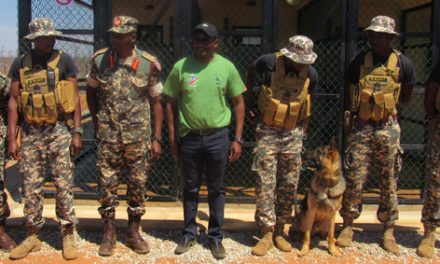
Swakopmund workshop looks at health of Benguela Current ecosystem

A healthy Benguela Current ecosystem is the lifeblood of the Namibian Blue Economy supporting fishing and tourism and thousands of jobs.
Like any living system it needs regular health check-ups, and the best way to do this is discussed at a workshop this Wednesday and Thursday, 15 and 16 February 2017, in Swakopmund.
Scientists, government officials, business and civil society representatives are considering linkages between the diverse “ecosystem services” provided by the ocean and coastal environment, and how best to measure and monitor them. This is vital to maintaining the sustainability of the economic and social benefits to the people who rely on the ecosystem.
Also on the agenda are the the ability to measure the economic value of the ecosystem, identify gaps in current monitoring activities and data, capacity and resource needs, and how to resolve potential conflicting uses in future.
The workshop forms part of a project by the Benguela Current Convention (BCC) to strengthen the ability of member states, Namibia, Angola and South Africa, to monitor the health of the Benguela Current ecosystem in their own countries and to implement an integrated approach to sustainable ecosystem management across national boundaries.
Together with the output of this week’s meeting, feedback from upcoming workshops in Angola and South Africa will contribute to integrated monitoring of the Benguela ecosystem’s health and the BCC’s planning for future collaborative projects and support to member states.
The Benguela Current flows up the South African West coast, along the entire Namibian coastline and into Angola. This creates a Large Marine Ecosystem (LME) with productive resources shared by the three countries. The Benguela Current Convention, signed by the three countries is the first LME in the world to embrace an “ecosystem approach to ocean governance”, which means managing trans-boundary resources at the ecosystem level, rather than each country acting alone, and balancing human needs with conservation imperatives.
The coastal and ocean resources of the Benguela Current Large Marine Ecosystem (BCLME) are estimated to contribute about US$269-billion annually to the economies of Namibia, Angola and South Africa. The BCLME is rich in fisheries resources, oil, gas, diamonds and other minerals, and for Namibia especially, represents a major tourism destination.
“A healthy marine ecosystem provides services that have a measurable social and economic value to human well-being. Some have direct commercial value such as fisheries, mineral and energy resources, and tourism assets, while others such as climate regulation, recreational benefits and symbolic cultural or spiritual uses, are more difficult to measure the value of.
“Putting a value on the services provided by the ecosystem is important for understanding its benefits to society, promoting conservation, and future decision-making, especially in resolving conflicting uses,” said Dr Margit Wilhelm, a member of the project team and lecturer in fisheries and aquatic sciences at the University of Namibia.
She said the BCC’s ecosystem approach to ocean governance – joint management by the three countries that integrates and balances human and ecological needs – is aligned with the Namibian government’s National Development Plan and Vision 2030 which aims to grow the oceans economy while strengthening ecosystem management.










































